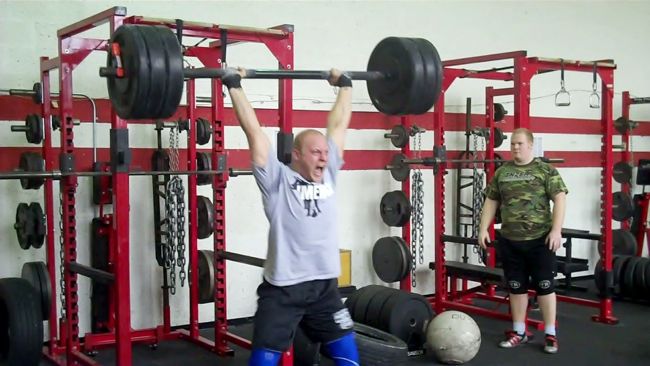
(This is the first in a four-part series)
I know what you’re thinking: You would rather drink hot-dog water than read an article about safety. I realize this, but after writing this article one thing that became evident was safety is part of everything we do in our program. Safety is much more than just spotting and cleaning up. It is what can define your entire program.
This semester at Denison, our Athletic Training Majors needed to interview a strength and conditioning coach for their portfolio. Conveniently, they had access to a strength coach in the same building. One of the questions in the interview was simply:
“How do you ensure safety in the weight room?”
Now, I knew the answer and began to explain the many ways we try to accomplish this. By the last few interviews, I was actually able to organize and articulate how we ensure safety more proficiently. I even came up with a corny acronym to represent the areas we focus on to ensure safety. We use the Acronym L.E.A.D — Logistics, Education, Attention-to-Detail, and Discipline.
LOGISTICS
Managing logistics effectively as a strength and conditioning coach can eliminate problems in the weight room before they happen. Being organized before an athlete actually steps in the weight room can ensure a safer and more productive environment. Three main areas that are particularly important include scheduling, communication and organization of the facility itself.
Weight Room Scheduling
How you schedule your teams can have a positive or negative impact on your athletes’ performance in the weight room. Knowing how many athletes that can successfully train without injuring themselves is imperative. This will depend heavily on the size of your facility, class schedules, time of year, number of assistants, etc. Some strategies that can assist in scheduling are:
Prioritizing teams based on season, i.e. in-season, pre-season, off-season and post-season
In-season teams have less flexibility because of practice, games, travel, etc. – schedule them first
Adjusting total training volume based on the number of total lifting groups on a given day
It is going to be difficult scheduling 2-hour workouts if you have to accommodate 8-12 teams in a day
Staggering lifting groups so multiple teams can utilize various areas or equipment in the facility
Splitting the workouts into distinct segments and staggering start times for teams so they overlap can help you as a coach become more organized and keep an accurate schedule. For example: one team is doing their warm-up, pre-hab, plyos, med-ball throws, etc. Group 2 is performing their emphasis (max effort) movements, and a third group is performing hypertrophy circuits, metabolic conditioning, or auxiliary lifts.
Separating speed training from strength training or at least having them in different areas
If you don’t have a distinct area immediately outside (or part of) your weight room, you will probably need to separate your speed and strength training segments. For athletes, transitioning from one end of the weight room to another wastes valuable time, let alone traveling from one end of the athletic facility or campus to another.
Minimizing drastic variation of exercise selection in training sessions between similar teams
I made this mistake early in my career. I have tried to incorporate way too many exercise variations and implement a different pool of variations for each sport. This topic can be an article in itself, but is there any collegiate or high school sport that will not benefit from squatting? Is there any sport in which muscular balance is not important? That being said, our basic lifting structure is the same regardless of sport. We basically split our exercise pool into 9 movements. Within these movements we will usually insert 2-4 exercises that we feel will be the best option for performance, injury reduction and logistics. Those movement categories are:
Triple Extension
Lower Body Double Leg Push
Lower Body Double Leg Pull
Lower Body single Leg Push
Lower Body Single Leg Pull
Upper Body Horizontal Push
Upper Body Horizontal Pull
Upper Body Vertical Push
Upper Body Vertical Pull
Where training will differ between sports will be:
Speed, Agility, and Plyometic Training – We categorize sports in Linear/ Lateral or Vertical/ Lateral
Conditioning - We categorize sports in intermittent or interval
Pre-Habilitation – We will assign special exercises for contact sports, stick sports and female athletes
Communication
Sport coach communication is critical in weight room scheduling. Keep in mind, each sport’s coach is only worried about their particular team’s schedule. As a strength coach, you need to manage the facility and schedule teams based on availability, time of year, team size, etc. Set parameters with these coaches and have meetings with them early in the pre-season. Prioritizing, offering multiple lifting times and utilizing assistants during peak hours are all items that can alleviate logistical issues and generates a “buy-in” from those coaches.
Weight Room Organization
How your weight room is organized can eliminate clutter and expedite workouts. Proper spacing between racks, platforms and other equipment is critical when designing a facility. Having enough space for warm-ups and auxiliary exercises will be a bonus. Most strength coaches would prefer extra space over extra equipment. Along with proper spacing, adequate site lines are an important element in how a weight room is set up. Being able to observe and coach all or most of the athletes in your facility is crucial. You can’t coach who you can’t see or who can’t hear you.
Next week in the L.E.A.D series: Education










